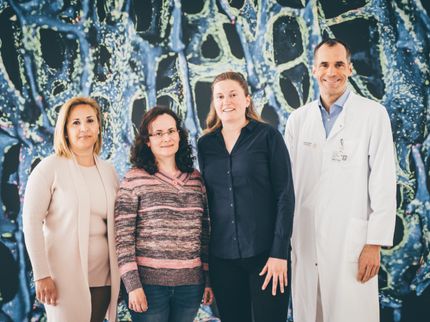New findings on UF marine compound shows versatility, from anti-tumor agent to bone regeneration
A promising medicinal compound discovered in a marine organism by University of Florida pharmacy researchers is showing its versatility against multiple diseases.
Having already demonstrated its power as an anti-tumor agent, largazole, produced by a cyanobacterium inhabiting coral reefs, has shown a new potential benefit for treating serious fractures, osteoporosis and other bone diseases, according to a study reported in ACS Medicinal Chemistry Letters.
Hendrik Luesch, Ph.D., an associate professor of medicinal chemistry at the UF College of Pharmacy, discovered the marine compound in Key Largo and reported initial findings in 2008. He teamed up with Jiyong Hong, Ph.D., an assistant professor at Duke University, who synthesized the compound in larger quantities to allow extensive testing.
After understanding largazole’s properties and cellular mechanism of action, Luesch, a member of the UF Shands Cancer Center, put it to the test against cancer cells with promising results. The researchers published their findings on largazole’s effectiveness against colon cancer last fall. Since then, they have expanded their collaboration to colleagues in South Korea, further unlocking largazole’s medical potential for bone regeneration.
Seong Hwan Kim, Ph.D., a researcher at the Korea Research Institute of Chemical Technology, along with colleagues at Wonkwang University schools of Medicine and Dentistry, tested largazole’s osteogenesis properties in cell cultures and test animals, discovering an unusual dual action of repairing injured or diseased bone and also blocking bone degeneration.
Both of those benefits stem from largazole’s effects on an enzyme class called histone deacetylases, or HDACs, which serve as a control switch for protein production. Overactivity of HDACs can lead to the silencing of important genes and consequently disease, Luesch said. He sees HDAC inhibition as a promising strategy to reactivate suppressed genes in diseased cells.
“Largazole’s ability to reprogram cells can also be exploited for tissue regeneration, and we initially focused on potential bone-forming properties of largazole,” Luesch said.
Luesch added that it’s proving to be the most potent natural HDAC inhibitor known and there are many diseases that may respond well to largazole.
The current research also showed that largazole, in a mix with a synthetic biomaterial containing collagen and calcium phosphate used for bone grafting, helped heal fractured bones.
Most read news
Other news from the department science

Get the life science industry in your inbox
By submitting this form you agree that LUMITOS AG will send you the newsletter(s) selected above by email. Your data will not be passed on to third parties. Your data will be stored and processed in accordance with our data protection regulations. LUMITOS may contact you by email for the purpose of advertising or market and opinion surveys. You can revoke your consent at any time without giving reasons to LUMITOS AG, Ernst-Augustin-Str. 2, 12489 Berlin, Germany or by e-mail at revoke@lumitos.com with effect for the future. In addition, each email contains a link to unsubscribe from the corresponding newsletter.



















































